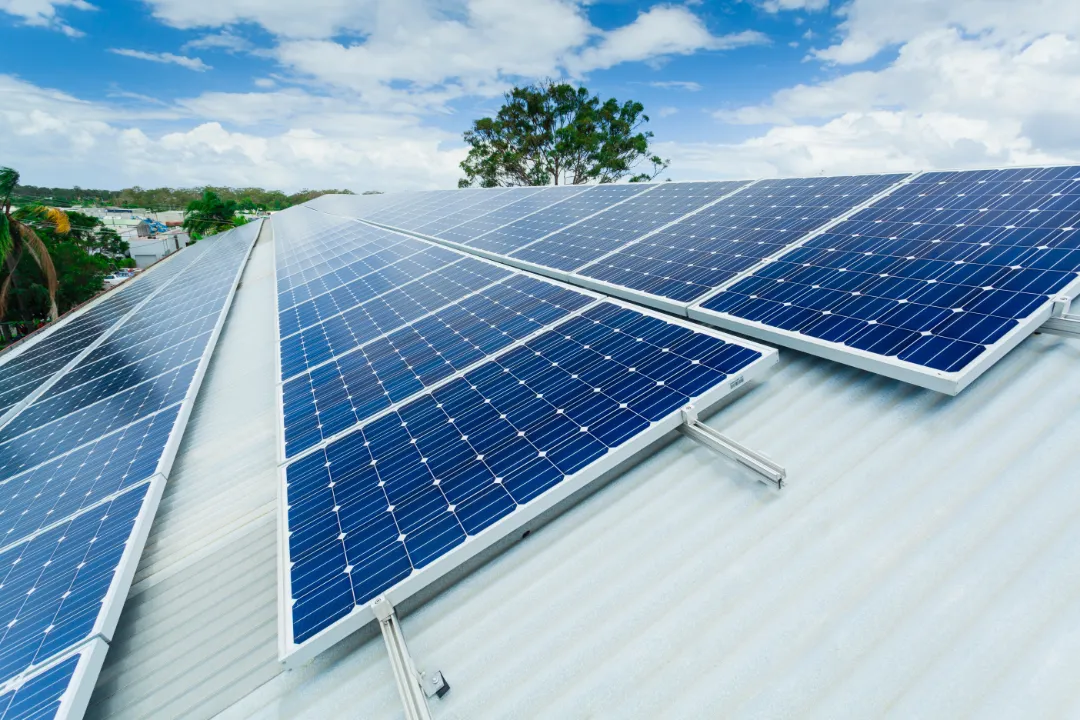PALM HARBOR SOLAR PROS BLOG
Insights from Our Solar Energy Journey

Solar Energy Vs. Traditional Power: the Ultimate Comparison
When it comes to the battle between solar energy and traditional power, the comparison is like a tug-of-war between two heavyweight contenders. Both have their strengths and weaknesses, and the decision of which to choose ultimately depends on a variety of factors. In this discussion, we will explore the cost-effectiveness, environmental impact, energy production and efficiency, reliability and availability, maintenance and longevity, grid dependency and energy independence, as well as adaptability and scalability of these two power sources. So, if you're curious to know which will emerge victorious in this clash of energy titans, hang tight and let's dive into the ultimate comparison.
Cost-effectiveness
When comparing the cost-effectiveness of solar energy and traditional power sources, it is clear that solar energy offers a more financially viable and sustainable solution. One of the key advantages of solar energy is the potential for significant financial savings. While the initial investment in solar panels and installation may seem high, the long-term benefits outweigh the costs. Solar energy systems have a lifespan of around 25-30 years, meaning that once the system is paid off, the electricity generated is essentially free. This translates into substantial savings on monthly utility bills, which can contribute to a higher return on investment (ROI) over time.
The return on investment for solar energy can be quite impressive. With the help of government incentives and tax credits, the payback period for solar installations can be shortened significantly. In some cases, homeowners and businesses can recoup their initial investment within five to ten years. After this point, the savings continue to accumulate, leading to increased financial stability and security. Additionally, solar energy systems can generate excess electricity, which can be sold back to the grid, further enhancing the ROI.
Environmental Impact
Solar energy has a significantly lower environmental impact compared to traditional power sources. One of the main reasons for this is that solar energy relies on renewable resources, such as sunlight, which are abundant and freely available. In contrast, traditional power sources, such as fossil fuels, are finite and non-renewable, leading to environmental degradation and resource depletion.
When it comes to the carbon footprint, solar energy is a clear winner. The use of solar panels to generate electricity produces zero greenhouse gas emissions, unlike traditional power sources that release significant amounts of carbon dioxide and other harmful pollutants into the atmosphere. By reducing our reliance on fossil fuels and transitioning to solar energy, we can effectively mitigate climate change and reduce air pollution.
Furthermore, solar energy systems have a minimal impact on the surrounding ecosystem. Unlike traditional power plants, which require extensive land use and can disrupt wildlife habitats, solar panels can be installed on various surfaces such as rooftops, parking lots, and unused land. This means that solar energy can be generated without causing significant harm to natural habitats or biodiversity.
Energy Production and Efficiency
Now let's explore the efficiency and production capabilities of solar energy compared to traditional power sources. Solar energy has made significant advancements in recent years, thanks to technological advancements and the development of more efficient solar panels. These advancements have greatly improved the efficiency of solar energy production, allowing for higher energy outputs compared to traditional power sources.
One of the challenges with solar energy has been its intermittent nature, as it relies on the availability of sunlight. However, energy storage solutions have been developed to address this issue. Batteries and other storage technologies allow for the capture and storage of excess solar energy during times of high production, which can then be used during periods of low sunlight. This not only ensures a more consistent power supply but also increases the overall efficiency of solar energy systems.
Traditional power sources, on the other hand, have limitations in terms of efficiency and production capabilities. Fossil fuel power plants, for example, have a relatively low efficiency rate, with a significant portion of the energy generated being lost as waste heat. Additionally, the extraction and burning of fossil fuels have negative environmental impacts.
Reliability and Availability
One key aspect to consider is the reliability and availability of different energy sources. When it comes to renewable energy, such as solar power, its reliability and availability depend on certain factors. Solar energy is dependent on sunlight, which means it may not be available during cloudy days or at night. However, advancements in solar technology, such as the use of batteries for energy storage, have greatly improved its reliability and availability. These batteries allow excess energy to be stored and used during times when sunlight is not available, ensuring a continuous power supply.
On the other hand, traditional power sources, such as fossil fuels, rely on finite resources that are becoming increasingly scarce. This dependence on limited resources makes traditional power sources less reliable in the long run. Additionally, traditional power relies on a centralized power grid, which is vulnerable to blackouts and failures. In contrast, renewable energy sources like solar power can be distributed and decentralized, reducing the risk of widespread power outages.
Maintenance and Longevity
When considering the comparison between solar energy and traditional power, an important factor to consider is maintenance and longevity. Solar energy systems generally require minimal maintenance compared to traditional power sources. Traditional power plants, such as coal or gas-fired power plants, require regular maintenance to ensure their efficient operation. This includes routine inspections, cleaning, and repairs, which can incur significant maintenance costs over time. On the other hand, solar panels have no moving parts and are designed to withstand various weather conditions. As a result, their maintenance costs are relatively low.
In terms of longevity, solar energy systems have a longer lifespan compared to traditional power plants. Solar panels typically have a warranty of 25 to 30 years, but can last even longer with proper care. In contrast, traditional power plants have a limited operational lifespan due to wear and tear, as well as technological obsolescence. This means that they may need to be replaced or upgraded after a certain period, resulting in additional costs.
Grid Dependency and Energy Independence
Considering the minimal maintenance and longer lifespan of solar energy systems compared to traditional power plants, the next aspect to explore is the topic of grid dependency and energy independence. One of the major advantages of solar energy is its ability to provide energy even in the absence of the traditional power grid. This can be achieved through the use of off-grid systems, which are not connected to the main power grid. These systems rely solely on solar energy, allowing individuals or communities to become self-sufficient in their energy needs.
Grid reliability is an important factor to consider when comparing solar energy to traditional power sources. Power outages are not uncommon, especially during extreme weather events or system failures. In these situations, homes and businesses connected to the grid are left without electricity until the issue is resolved. However, with solar energy systems, individuals can rely on their own power supply, unaffected by grid failures. This provides a sense of security and peace of mind, knowing that even during power outages, essential appliances and devices can still function.
Additionally, off-grid systems offer the opportunity for energy independence. By generating their own electricity, individuals can reduce their reliance on traditional power sources, which are often associated with high costs and environmental impacts. Off-grid systems allow for greater control over energy production and consumption, and can even lead to significant financial savings in the long run.
Adaptability and Scalability
We can easily adapt and scale solar energy systems to meet the changing needs of individuals and communities. One of the key advantages of solar energy is its ability to integrate with the existing power grid. With advancements in grid integration technology, solar energy can be seamlessly integrated into the traditional power infrastructure. This allows for a more reliable and efficient distribution of energy.
Moreover, technological advancements in solar energy have made it increasingly scalable. Solar panels can be installed on both small and large scales, making it suitable for individual households as well as entire communities. This scalability ensures that solar energy can meet the varying energy demands of different users.
Additionally, the adaptability of solar energy systems is evident in their ability to be easily expanded or modified. As the needs of individuals and communities change, solar energy systems can be upgraded or expanded to accommodate these changes. This flexibility allows for the customization of solar energy systems to match specific requirements.
Conclusion
In conclusion, after comparing solar energy and traditional power in terms of cost-effectiveness, environmental impact, energy production and efficiency, reliability and availability, maintenance and longevity, grid dependency and energy independence, as well as adaptability and scalability, it is clear that solar energy emerges as the superior choice. Not only does it offer a more sustainable and environmentally-friendly solution, but it also provides a cost-effective and reliable alternative to traditional power sources. Embracing solar energy is crucial for a greener and more sustainable future.
Connect With Us
Locations We Serve:
© Copyright 2026 Palm Harbor Solar Pros. All Rights Reserved.
Terms & Conditions | Privacy Policy

